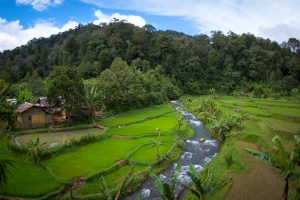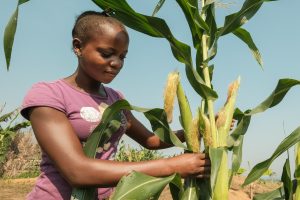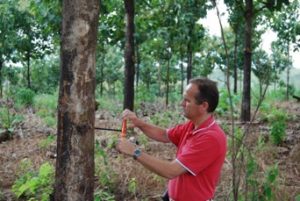
©Form International
Continuing this new interview series on inclusive landscape finance, we hear from the corporate sector.
Paul Hol, CEO of FORM International, shares his views with Tropenbos International’s Nick Pasiecznik on what is already being achieved and, more importantly, what still needs to be done to attract more investment for reforestation of degraded forest landscapes.
FORM International is a forest management and services company that manages forest assets in Africa and delivers a range of management and financial services. It is coinvestor in the investment company Sustainable Forestry Investments (SFI).
“The main issues are the lack of projects and the problem of scale,” states Paul. “There is also a need for stakeholder involvement, but financial sustainability and a sound business case are paramount to success.”
How are you involved in sustainable forest landscapes?
FORM International has supported sustainable forest management for more than 25 years, assisting Sustainable Forestry Investment (SFI) to attract more than USD 60 million of investment, directly benefiting more than 2,400 employees. Founded in 1992, FORM International has provided innovative services to support the implementation of best practices. In 2007, we focused our operations through the establishment of FORM Ghana Ltd.
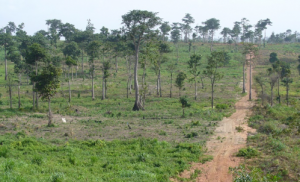
This FSC certified plantation company integrates large-scale reforestation of degraded forest land with the needs of local villagers and the environment, while not compromising economic viability. Today, FORM Ghana manages some 18,000 hectares in close collaboration with smallholders and communities. Following successes here, SFI Tanzania Ltd. was set up in 2013 and now sustainably manages timber and sisal production on 10,000 hectares of formerly degraded forest in the Tanga region.
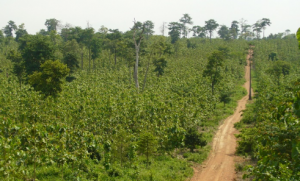
In parallel, FORM International partnered with SFI in 2009. SFI is an investment company based in the Netherlands. While FORM International implements projects, SFI attracts institutional and impact investors who share FORM’s belief in sustainable reforestation and who want to make a real contribution on a large scale.
It is aiming to secure investments of about USD 150 million by 2022, and wants to increase the area of reforested land to 40,000 hectares. This commitment was made during COP 21 in Paris in 2015, in partnership with the African Forest Landscape Restoration Initiative (AFR100), which is an initiative of the World Resources Institute and the New Partnership for Africa’s Development, a program of the African Union.
Read also: Forest finance partnerships more productive than competition
You have invested in sustainable forestry, but why have so few other organizations followed suit?
There is plenty of money, but there are too few ‘good’ projects! And it not just the lack of project ideas, but also the problem of bringing good projects to scale. The Netherlands Platform for Microfinance (NPM), for example, has significant capital to invest, but they, and similar institutions, cannot finance just a handful of farmers. To ensure impact at a large scale, we need vehicles or mechanisms that are effective and adaptable.
A very simple way to develop project ideas would be to gather a group of experts together, and send them around the world to identify good land-use practices that can be translated into bankable projects and would benefit communities and the environment.
However, there are two prerequisites. First is the essential need to listen to people, lots of different people, to understand their land-use interests. Second is the need to develop a ‘technical concept’ that works for one hectare, but that can also be scaled up. Importantly, a structure is needed to handle the finance aspects in a uniform way – and this requires organizing farmers into formal groups or associations.
What must not be forgotten is the overriding element for success, which is financial sustainability. At the moment, we are making efforts towards environmental restoration in a rather chaotic and haphazard way. Some organizations focus on protecting a single species or ecosystem, for example, others focus on a single commodity, while what we obviously need is something much broader than that.
Specifically, how is your organization addressing inclusive finance, and what are your experiences and key lessons?
We have the knowledge – look how we made this work in Europe. We started with the ‘technical concept’, mapping soil and climate types, and linked this to inputs and financial returns. Governments were strongly involved. But we didn’t consider long-term impacts.
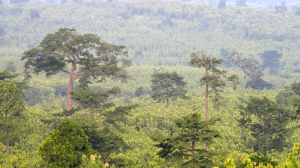
©FORM International
We do include sustainability in our technical concepts, though we are still only at the early stages of analyzing, testing and determining the best ways forward. Once we do find the right answer, doors will open to accessing more finance, and convincing other stakeholders to participate
As a plantation company, we and others like us are in a key position to offer ‘good’ projects to investors, and to scale them up, i.e. to overcome the main obstacles in offering finance for reforestation. But how do we define ‘good’?
By using transparent and globally agreed standards. FORM International’s plantations are certified according to the Forest Stewardship Council’s Ten Principles for Sustainable Forest Management, or to other certification standards with similar sustainability principles.
Read also: Strengthening producer organizations is key to making finance inclusive and effective
What examples do you have of successful or promising ‘model’ approaches or innovations?
We feel that the three specific pillars of our unique investment concept offer one possible model. First, establish a good relationship with traditional landowners, farmers and local communities to ensure that plantation development will be beneficial for all, leading to a stable and long-term situation. Second, respect strict ecological and environmental standards. And third, develop plantations in a way that will allow us to meet target returns on investment.
We also need to continue to set realistic goals – and to build momentum to ensure that we meet them. For example, I led the organization of ‘Forests for the Future: New Forests for Africa’ in Accra, Ghana, in March 2016, to discuss the implementation of reforestation goals in the AFR100.
What is your vision on how best to increase finance and investment in sustainable forestry?
We must understand local needs and concerns. If landscape restoration is to succeed, it needs stakeholder involvement in a way that is financially attractive and sustainable. This means ‘inclusive finance’. This is a term that is now being used to describe what we have been doing for some time regarding reforestation of degraded lands. What makes it different from other forms of finance is that it includes local people, right from the start.
I also believe in voluntary and spontaneous development. It cannot be forced – but it can be helped. Consultant advisors, for example, will fail if they try to implement a one-size-fits-all system to build bridges between smallholders and investors.
But they can support a better positioning of farmers, organizations and companies, and build the capacities of smallholders and their organizations as a basis for what might follow organically.
I strongly believe that people can help to build such important relationships, but only in the region they work in and know, culturally, socially and economically. They can then assist in formulating and putting into place adapted, tailor-made approaches, developed from hands-on experience. Importantly, this must involve the expansion of links with local governments.
Government support for, and cooperation in this kind of project is essential, but private sector involvement is crucial to drive success, attract much-needed investments and achieve the third component of sustainability, i.e. increase the financial independence and improve the financial position of all stakeholders involved.
Forest and landscape restoration is one of the answers to climate change, but in most cases it will not be the main motivation for participants, and is likely to be different for each land user. To make such projects successful, we need each other, and every single partner – company, authority or farmer – to see the added value of participation.
By Nick Pasiecznik, Tropenbos International.
This interview has also been published on the Tropenbos International website.
This article was produced by Tropenbos International and the Center for International Forestry Research (CIFOR) as part of the CGIAR Research Program on Forests, Trees and Agroforestry (FTA). FTA is the world’s largest research for development program to enhance the role of forests, trees and agroforestry in sustainable development and food security and to address climate change. CIFOR leads FTA in partnership with Bioversity International, CATIE, CIRAD, INBAR, ICRAF and TBI. FTA’s work is supported by the CGIAR Trust Fund.












